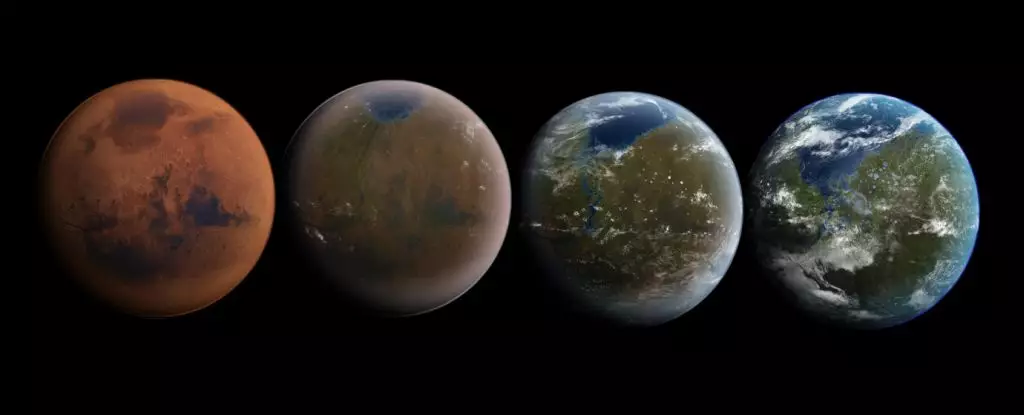Establishing human colonies on Mars has long been a dream for space enthusiasts and scientists alike. However, the harsh climate and inhospitable conditions on the red planet have posed significant challenges to making this dream a reality. The traditional strategies proposed for terraforming Mars involved pumping greenhouse gases into its thin atmosphere, a costly and difficult process. But now, a groundbreaking new method has been discovered that could revolutionize the future of Mars colonization.
A team of scientists led by electrical engineer Samaneh Ansari of Northwestern University has proposed a novel approach to warming up Mars. By releasing nanoscopic metal rods into the Martian atmosphere, they aim to create and maintain a greenhouse effect that could significantly raise the planet’s temperature. According to the researchers, this method is 5,000 times more efficient than previous strategies, making the prospect of terraforming Mars much more feasible.
The key advantage of the nanorod solution is that it utilizes the resources readily available on Mars. The planet’s surface soil is rich in metallic minerals such as aluminum and iron, which can be used to create the nanorods. These tiny particles, with an aspect ratio of 60:1, would be released into the Martian sky to trap sunlight and generate heat, similar to the way greenhouse gases work on Earth. The researchers estimate that by maintaining a sustained release of these nanorods, Mars could be warmed by more than 28 degrees Celsius over the course of several decades.
While the nanorod solution shows great promise, there are still some hurdles that need to be overcome. One concern is the longevity of the nanorods in Mars’ atmosphere, which is prone to leakage into space. Additionally, as Mars warms up, the nanoparticles could attract water particles and eventually fall back down to the surface as rain. This presents a potential complication that requires further investigation and study.
Despite these challenges, the potential benefits of the nanorod solution are immense. If successful, this method could pave the way for establishing long-term human colonies on Mars. While the planet may not become habitable for vertebrates anytime soon, it could create a conducive environment for microbial life and serve as a crucial first step towards terraforming Mars.
The discovery of the nanorod solution represents a significant breakthrough in the field of space exploration. By harnessing the power of metallic nanoparticles, we may be one step closer to realizing our dream of establishing a sustainable human presence on Mars. As we continue to expand our understanding of the red planet and push the boundaries of scientific discovery, the possibilities for the future of Mars colonization are truly limitless.


Leave a Reply